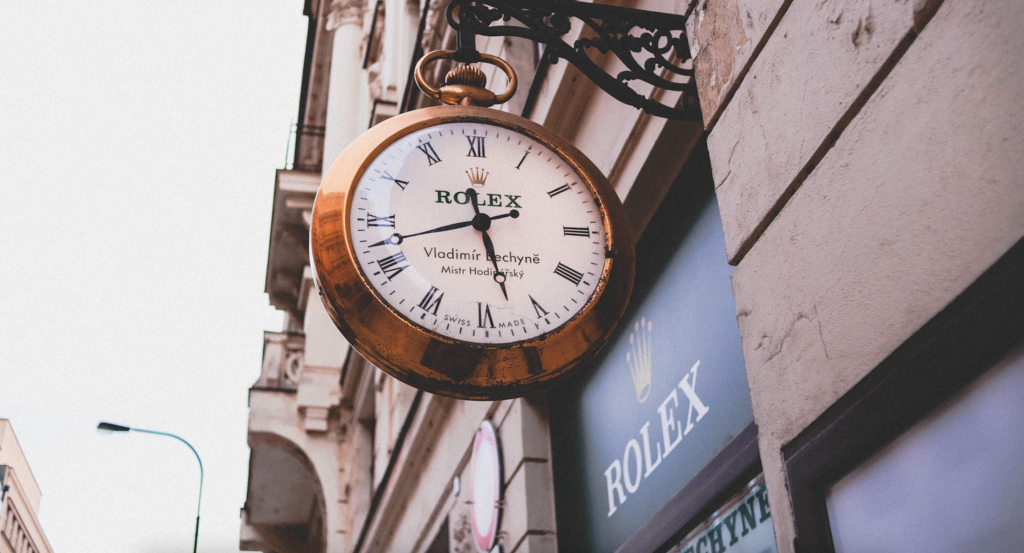What do Rolex, Cartier, Breitling, Audemars Piguet, Jaeger-LeCoultre, Chopard, and Patek Phillipe, for instance, have in common? Their watches benefit from a certain status and an esteemed geographic indication that comes with being Swiss made. After all, “It is no secret that Swiss products and services enjoy a great reputation both at home and abroad,” according to Swiss trademark attorney Milana Pantelic, who notes that the “Swiss made” reputation centers on “high quality, tradition, precision, luxury, high technology, innovation and reliability.”
That reputation and the goodwill associated with the “Swiss made” designation is derived, in large part, from the aforementioned watchmakers’ (and others’) enduring investment in “quality, tradition and durability,” Deloitte stated in its Swiss Watch Industry Study last year, with “the time-honored quality and tradition of Swiss watchmaking maintaining its importance” over decades (and even centuries in some cases), both from an initial point of sale perspective, and increasingly, in the pre-owned market, thereby, translating to striking demand and increasingly expensive price tags
While the Financial Times noted in September that “currency fluctuations and quality” – paired with “the growth of the pre-owned market, [which] has kept residual values high, giving brands the confidence to push up primary market prices” – are part of the reason for enduring price hikes in the Swiss watch market, there is another element is at play, too. In many cases, the stellar reputation enjoyed by Swiss watchmakers directly translates to a premium, thereby, bestowing upon them pricing power as a result of the coveted geographical indication.
In other words, with consumers routinely showing a preference for certain products as a result of a specific geographic indication and exhibiting a willingness to pay more for those products (again, as a result of a specific geographic indication), it is clear that such geography-specific designations confer real, added value for brand owners. For example, in terms of luxury goods, such as watches, the Swiss-made indication can lead to a 50 percent increase in value, according to the Swiss Federal Institute of International Property (“IPI”).
With that in mind, companies have not only looked to geographic indicators as “a marketing and branding tool with the power to influence consumer patterns, command premium pricing, and generate trade and economic benefits,” Pinduoduo aptly stated in a report this fall; legislators have focused on how to protect these valuable designations in order to maintain their ability to act as unique indictors. “To better protect the ‘Swiss’ brand,” for instance,” and “prevent misuse and maintain its long-term value,” the Swiss government implemented new legislation in January 2017 to provide clear rules for the registration and use of Swiss indications of source.
Those rules establish that a watch, for example, may only be regarded as a Swiss watch if: (1) its technical development has taken place in Switzerland (in the case of exclusively mechanical watches, at least the mechanical construction and prototyping of the watch as a whole; and in the case of watches that are not exclusively mechanical, at least the mechanical construction and prototyping of the watch as a whole, together with the conception of the printed circuit or circuits, the display and the software); (2) its movement is Swiss; (3) its movement has been cased up in Switzerland; (4) final inspection by the manufacturer took place in Switzerland; and (5) at least 60 percent of the manufacturing costs is generated in Switzerland.
Fast forward to late last year and the Swiss Federal Council evaluated the efficacy of the so-called “Swissness” legislation, revealing in a formal release in December that “the ‘Swiss’ brand is adequately protected” and routinely generates “more than Sfr1 billion ($1.13 billion) annually for the Swiss economy.” At the same time, the Federal Council found that there has been an overall decrease in the misuse of Swiss indications of source since the legislation was enacted four years ago.
While the Council determined that based on the results of its examination, the legislation is “achieving its overall objective,” and thus, there is “no need for revision,” Pantelic asserted that “there is still a need for action and enforcement, particularly abroad.” She says that “it will be interesting to see to what extent enforcement is increased in the future” beyond the Swiss border, such as in China, where counterfeits and bad-faith trademark filings are prevalent.
Given that the “Swissness” legislation “can only be implemented in Switzerland to combat misuse [of the “Swiss” designation], and thus, is not applicable abroad,” the IPI says that it is “particularly difficult to enforce such protections” in countries, such as China, where counterfeiting continues to prove a largescale problem. The IPI has noted, however, that it has had some success in fighting misuse of the “Swiss” brand in China, as “the Chinese Trademark Office consistently rejects applications that contain wrongful use of the Swiss cross or the word ‘Swiss’ as part of the trademark.” At the same time, the IP body notes that “the legal framework [in China] also allows for the confiscation and destruction of products which are wrongfully advertised as being ‘Swiss Made.’”
Still yet, Pantelic says that it will be striking to see how case law develops in this arena. “Since the Swissness legislation was adopted, only three decisions have been issued by the IPI so far (Decision No 14926, Decision No 100092 and Joint Decision No 100099-100102), with the two latter currently pending on appeal before the Federal Administrative Court,” leaving practitioners to await future decisions on “Swissness,” including whether courts instances will uphold the IPI’s decisions.
As for how Swiss watchmakers have fared in light of the COVID-19 pandemic, which “paused sales in important markets like China and shut down much of Europe and the U.S.,” prompting Swiss watch exports to plunge, Quartz’s Marc Bain reported in December that recovery was underway with the strongest rebounds “happening among watches with high price tags,” with “very high-end watches” proving to be “one reason for the surprising buoyancy of luxury watches [in 2020].”
“In 2020, we would have expected an even deeper drop of the watch market,” says Federica Levato, a partner at Bain and leader of its global consumer products and retail practice, told Quartz. However, she said that “the watch market has proven to be resilient.”











